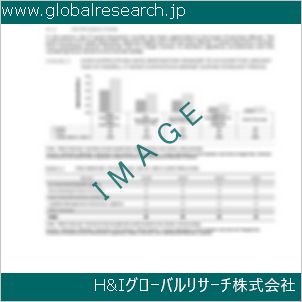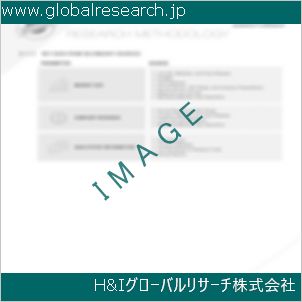Table of Contents
1 Industry Overview of Dimer, Parylene N
1.1 Definition and Specifications of Dimer, Parylene N
1.1.1 Definition of Dimer, Parylene N
1.1.2 Specifications of Dimer, Parylene N
1.2 Classification of Dimer, Parylene N
1.3 Applications of Dimer, Parylene N
1.3.1 Nuclear Application
1.3.2 Non-Nuclear Application
1.4 Industry Chain Structure of Dimer, Parylene N
1.5 Industry Overview and Major Regions Status of Dimer, Parylene N
1.5.1 Industry Overview of Dimer, Parylene N
1.5.2 Global Major Regions Status of Dimer, Parylene N
1.6 Industry Policy Analysis of Dimer, Parylene N
1.7 Industry News Analysis of Dimer, Parylene N
2 Manufacturing Cost Structure Analysis of Dimer, Parylene N
2.1 Raw Material Suppliers and Price Analysis of Dimer, Parylene N
2.2 Equipment Suppliers and Price Analysis of Dimer, Parylene N
2.3 Labor Cost Analysis of Dimer, Parylene N
2.4 Other Costs Analysis of Dimer, Parylene N
2.5 Manufacturing Cost Structure Analysis of Dimer, Parylene N
2.6 Manufacturing Process Analysis of Dimer, Parylene N
3 Technical Data and Manufacturing Plants Analysis of Dimer, Parylene N
3.1 Capacity and Commercial Production Date of Global Dimer, Parylene N Major Manufacturers in 2023
3.2 Manufacturing Plants Distribution of Global Dimer, Parylene N Major Manufacturers in 2023
3.3 R&D Status and Technology Source of Global Dimer, Parylene N Major Manufacturers in 2023
3.4 Raw Materials Sources Analysis of Global Dimer, Parylene N Major Manufacturers in 2023
4 Capacity, Production and Revenue Analysis of Dimer, Parylene N by Regions, Types and Manufacturers
4.1 Global Capacity, Production and Revenue of Dimer, Parylene N by Regions 2019-2024
4.2 Global and Major Regions Capacity, Production, Revenue and Growth Rate of Dimer, Parylene N 2019-2024
4.3 Global Capacity, Production and Revenue of Dimer, Parylene N by Types 2019-2024
4.4 Global Capacity, Production and Revenue of Dimer, Parylene N by Manufacturers 2019-2024
5 Price, Cost, Gross and Gross Margin Analysis of Dimer, Parylene N by Regions, Types and Manufacturers
5.1 Price, Cost, Gross and Gross Margin Analysis of Dimer, Parylene N by Regions 2019-2024
5.2 Price, Cost, Gross and Gross Margin Analysis of Dimer, Parylene N by Types 2019-2024
5.3 Price, Cost, Gross and Gross Margin Analysis of Dimer, Parylene N by Manufacturers 2019-2024
6 Consumption Volume, Consumption Value and Sale Price Analysis of Dimer, Parylene N by Regions, Types and Applications
6.1 Global Consumption Volume and Consumption Value of Dimer, Parylene N by Regions 2019-2024
6.2 Global and Major Regions Consumption Volume, Consumption Value and Growth Rate of Dimer, Parylene N 2019-2024
6.3 Global Consumption Volume and Consumption Value of Dimer, Parylene N by Types 2019-2024
6.4 Global Consumption Volume and Consumption Value of Dimer, Parylene N by Applications 2019-2024
6.5 Sale Price of Dimer, Parylene N by Regions 2019-2024
6.6 Sale Price of Dimer, Parylene N by Types 2019-2024
6.7 Sale Price of Dimer, Parylene N by Applications 2019-2024
6.8 Market Share Analysis of Dimer, Parylene N by Different Sale Price Levels
7 Supply, Import, Export and Consumption Analysis of Dimer, Parylene N
7.1 Supply, Consumption and Gap of Dimer, Parylene N 2019-2024
7.2 Global Capacity, Production, Price, Cost, Revenue, Supply, Import, Export and Consumption of Dimer, Parylene N 2019-2024
7.3 USA Capacity, Production, Price, Cost, Revenue, Supply, Import, Export and Consumption of Dimer, Parylene N 2019-2024
7.4 EU Capacity, Production, Price, Cost, Revenue, Supply, Import, Export and Consumption of Dimer, Parylene N 2019-2024
7.5 China Capacity, Production, Price, Cost, Revenue, Supply, Import, Export and Consumption of Dimer, Parylene N 2019-2024
7.6 Japan Capacity, Production, Price, Cost, Revenue, Supply, Import, Export and Consumption of Dimer, Parylene N 2019-2024
8 Major Manufacturers Analysis of Dimer, Parylene N
8.1 Manufacturer One
8.1.1 Company Profile
8.1.2 Product Picture and Specifications
8.1.2.1 Type I
8.1.2.2 Type II
8.1.2.3 Type III
8.1.3 Capacity, Production, Price, Cost, Gross and Revenue
8.1.4 Contact Information
8.2 Manufacturer Two
8.2.1 Company Profile
8.2.2 Product Picture and Specifications
8.2.2.1 Type I
8.2.2.2 Type II
8.2.2.3 Type III
8.2.3 Capacity, Production, Price, Cost, Gross and Revenue
8.2.4 Contact Information
8.3 Manufacturer Three
8.3.1 Company Profile
8.3.2 Product Picture and Specifications
8.3.2.1 Type I
8.3.2.2 Type II
8.3.2.3 Type III
8.3.3 Capacity, Production, Price, Cost, Gross and Revenue
8.3.4 Contact Information
8.4 Manufacturer Four
8.4.1 Company Profile
8.4.2 Product Picture and Specifications
8.4.2.1 Type I
8.4.2.2 Type II
8.4.2.3 Type III
8.4.3 Capacity, Production, Price, Cost, Gross and Revenue
8.4.4 Contact Information
8.5 Manufacturer Five
8.5.1 Company Profile
8.5.2 Product Picture and Specifications
8.5.2.1 Type I
8.5.2.2 Type II
8.5.2.3 Type III
8.5.3 Capacity, Production, Price, Cost, Gross and Revenue
8.5.4 Contact Information
…
9 Marketing Trader or Distributor Analysis of Dimer, Parylene N
9.1 Marketing Channels Status of Dimer, Parylene N
9.2 Traders or Distributors with Contact Information of Dimer, Parylene N by Regions
9.3 Ex-work Price, Channel Price and End Buyer Price Analysis of Dimer, Parylene N
9.4 Regional Import, Export and Trade Analysis of Dimer, Parylene N
10 Industry Chain Analysis of Dimer, Parylene N
10.1 Upstream Major Raw Materials Suppliers Analysis of Dimer, Parylene N
10.1.1 Major Raw Materials Suppliers with Contact Information Analysis of Dimer, Parylene N
10.1.2 Major Raw Materials Suppliers with Supply Volume Analysis of Dimer, Parylene N by Regions
10.2 Upstream Major Equipment Suppliers Analysis of Dimer, Parylene N
10.2.1 Major Equipment Suppliers with Contact Information Analysis of Dimer, Parylene N
10.2.2 Major Equipment Suppliers with Product Pictures Analysis of Dimer, Parylene N by Regions
10.3 Downstream Major Consumers Analysis of Dimer, Parylene N
10.3.1 Major Consumers with Contact Information Analysis of Dimer, Parylene N
10.3.2 Major Consumers with Consumption Volume Analysis of Dimer, Parylene N by Regions
10.4 Supply Chain Relationship Analysis of Dimer, Parylene N
11 Development Trend of Analysis of Dimer, Parylene N
11.1 Capacity, Production and Revenue Forecast of Dimer, Parylene N by Regions and Types
11.1.1 Global Capacity, Production and Revenue of Dimer, Parylene N by Regions 2024-2029
11.1.2 Global and Major Regions Capacity, Production, Revenue and Growth Rate of Dimer, Parylene N 2024-2029
11.1.3 Global Capacity, Production and Revenue of Dimer, Parylene N by Types 2024-2029
11.2 Consumption Volume and Consumption Value Forecast of Dimer, Parylene N by Regions, Types and Applications
11.2.1 Global Consumption Volume and Consumption Value of Dimer, Parylene N by Regions 2024-2029
11.2.2 Global and Major Regions Consumption Volume, Consumption Value and Growth Rate of Dimer, Parylene N 2024-2029
11.2.3 Global Consumption Volume and Consumption Value of Dimer, Parylene N by Types 2024-2029
11.2.4 Global Consumption Volume and Consumption Value of Dimer, Parylene N by Applications 2024-2029
11.3 Supply, Import, Export and Consumption Forecast of Dimer, Parylene N
11.3.1 Supply, Consumption and Gap of Dimer, Parylene N 2024-2029
11.3.2 Global Capacity, Production, Price, Cost, Revenue, Supply, Import, Export and Consumption of Dimer, Parylene N 2024-2029
11.3.3 USA Capacity, Production, Price, Cost, Revenue, Supply, Import, Export and Consumption of Dimer, Parylene N 2024-2029
11.3.4 EU Capacity, Production, Price, Cost, Revenue, Supply, Import, Export and Consumption of Dimer, Parylene N 2024-2029
11.3.5 China Capacity, Production, Price, Cost, Revenue, Supply, Import, Export and Consumption of Dimer, Parylene N 2024-2029
11.3.6 Japan Capacity, Production, Price, Cost, Revenue, Supply, Import, Export and Consumption of Dimer, Parylene N 2024-2029
12 New Project Investment Feasibility Analysis of Dimer, Parylene N
12.1 New Project SWOT Analysis of Dimer, Parylene N
12.2 New Project Investment Feasibility Analysis of Dimer, Parylene N
13 Conclusion of the Global Dimer, Parylene N (CAS 1633-22-3) Industry 2024 Market Research Report
| ※参考情報 パリレンN二量体(Parylene N)は、ポリアミド系の高分子材料であり、特に電子機器や医療機器へのコーティング材料として広く使用されています。化学的にはCAS番号1633-22-3で表示されるこの材料は、特にその優れた特性から多岐にわたる応用がなされています。 パリレンは、通常はパラキシレンから得られるポリマーで、蒸気相成長法を用いて薄膜としてコーティングを行うことが特徴です。これにより、非常に均一な膜厚を持ち、複雑な形状の基材に対しても優れたコーティング性能を発揮します。この膜は、物理的、化学的耐性が優れており、耐薬品性や耐湿性に富んでいます。さらに、絶縁性が高く、電気的な特性も良好であるため、電子機器の絶縁材料としての使用が推奨されています。 パリレンNは、他のパリレン系ポリマーと比較して、特に透明性が高く、光に対する透過率が良好です。これにより、光学的な用途にも適しており、センサーや光学デバイスのコーティングとしても利用されています。また、パリレンNの特徴として、極めて薄い膜でも高い防護性能を保つことができる点があります。このため、省スペースでの配置が求められる電子回路基板などにも非常に重宝されています。 パリレンの種類にはいくつかのバリエーションがあり、最も一般的なものとしてパリレンN、パリレンC、パリレンDがあります。パリレンNは、他の種類と比較しても、特に用途の幅が広く、一般的な材料として利用されることが多いです。一方、パリレンCはより優れた耐薬品性を持ち、パリレンDはさらなる電気絶縁特性が期待されます。それぞれの種類には特有の特性があり、選択は使用目的によって異なります。 パリレンの主な用途には、電子機器、医療機器、自動車、航空機、さらには光学機器まで多様性があります。特に医療分野では、インプラントやセンサー、診断機器などに向けたコーティングが行われ、体内での生体適合性が求められる製品にも使われています。コーティングされた部品は耐腐食性や耐水性があり、長期間にわたって安定した性能を維持することが可能です。 さらに、パリレンNはその加工性の高さからも注目されています。蒸気により基材の表面を均一に覆うことができるため、形状が複雑な部品でも容易にコーティングが行えます。これにより、電子機器の基盤の保護だけでなく、デバイスの機能を向上させる用途があります。具体的には、回路基板の組立工程や、半導体デバイスの封止などが含まれます。 その一方で、パリレンNの加工には特定の設備やプロセスが必要であり、コーティングの均一性、高度な技術が要求されることから、導入コストや運用コストが高くなることもあります。さらに、コーティング後の処理や検査工程においても注意が必要です。高分子材料であるがゆえに、適切な環境条件下での取扱いや保存が求められます。 最近では、ナノテクノロジーとの関連にも注目が集まっています。ナノ粒子をパリレンNの膜に組み込むことにより、さらなる性能向上や新たな特性の創出も期待されており、研究が進められています。これにより、将来的にはより高機能なデバイスの開発が可能になるでしょう。 総じて、パリレンN二量体は、その特有の特性から広範な応用が可能な高分子材料です。耐久性、絶縁性、耐薬品性に優れたこの材料は、多くの先端技術分野で重要な役割を果たしています。その使用は今後も増加すると予想され、新しい技術導入や市場ニーズに応じた発展が期待される分野です。 |
❖ 免責事項 ❖
http://www.globalresearch.jp/disclaimer












